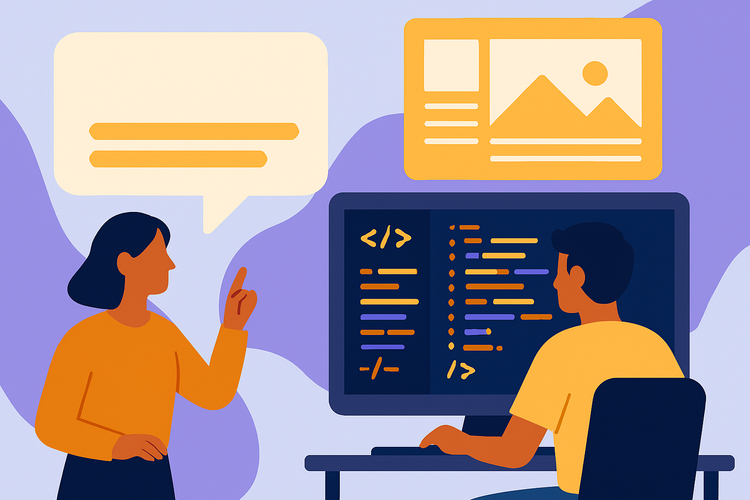Enhancing AI Security: Integrating Prompt Shields and Spotlight Techniques for Safer AI Operations

Introduction
Integrating artificial intelligence (AI) into our daily routines is becoming increasingly ubiquitous, reshaping the landscape of industries ranging from healthcare to finance and beyond. Among the various subclasses of AI, generative AI stands out as a revolutionary force due to its ability to create content, generate answers, and propose solutions with stunning complexity and usefulness.
As generative AI systems like ChatGPT, GPT-4, and their counterparts grow more advanced, so do the techniques employed by adversaries seeking to exploit these technologies. Adversarial inputs, which are manipulative data injections designed to deceive AI models into making errors or producing unintended outputs, represent a significant and growing threat. These malicious interventions not only compromise the security and privacy of users and organizations but also pose a direct threat to the integrity of AI operations, underscoring the urgent need for advanced security measures.
Recognizing the potential consequences of such vulnerabilities, there is a compelling need to develop and deploy advanced protection techniques. This necessity is driving innovation in AI security measures, including the creation of prompt shields and spotlighting prompting techniques—methods designed to safeguard AI systems against these increasingly sophisticated threats. By understanding and implementing these advanced security tactics, generative AI developers and users can better protect their systems, ensuring that AI continues to serve as a tool for innovation and improvement rather than a vector for exploitation.
The Basics of Generative AI and Its Vulnerabilities
Generative Artificial Intelligence (AI) refers to a subset of AI technologies that specialize in creating new content, from written text and artwork to music and synthetic media. This capability is powered by machine learning models, particularly deep learning networks, trained on vast datasets. These models learn to predict and generate outputs based on the inputs they receive. For example, when a generative AI model like GPT-4 is prompted with a question, it analyzes the input, compares it with its trained data, and generates the most probable text sequence as the answer.
While generative AI's functionality opens up transformative possibilities across various sectors, it also introduces significant security vulnerabilities. The very features that make generative AI powerful—its responsiveness and adaptability to new inputs—make it susceptible to manipulation. Adversarial prompts are crafted inputs that exploit how AI models process information, aiming to trick the model into generating false, biased, or harmful outputs. This type of security threat is particularly challenging because it uses the model's inherent learning and generative capabilities against itself.
External manipulations further complicate the security landscape. These can occur when malicious actors incorporate harmful data into the training materials of an AI, leading to compromised outputs once the model is operational. Alternatively, attackers might intercept and alter AI responses during their transmission back to users, a method known as a "man-in-the-middle" attack. Both adversarial prompts and external manipulations jeopardize the trustworthiness and reliability of AI applications, highlighting the acute need for robust security measures explicitly designed for the nuanced challenges of generative technologies.
The potential fallout from such vulnerabilities is not just theoretical; it has practical implications across industries where decisions are increasingly AI-driven. Unauthorized access and manipulation can lead to misinformation, financial fraud, intellectual property theft, and even sabotage of automated systems. Therefore, understanding these vulnerabilities is the first step in safeguarding the technology from attacks that could undermine the very benefits generative AI seeks to offer.
Introduction to Prompt Shields
One of the most promising innovations in the quest to fortify generative AI against the burgeoning threats of manipulation and misuse is the prompt shield. Prompt shields are advanced security mechanisms designed specifically to enhance the resilience of AI systems by safeguarding them against malicious inputs and manipulations. These tools are a crucial part of the defensive arsenal for any AI-driven operation, serving as both a detector and a neutralizer of potential threats.
Prompt shields operate by meticulously analyzing the inputs received by an AI model. This examination aims to identify patterns or signs that indicate adversarial intent or deviate from typical, benign requests. The detection process often involves comparing incoming prompts against a database of known threats or using heuristic approaches to recognize unusual activities that could signal a manipulation attempt.
Once a potentially harmful input is detected, the prompt shield takes various measures to neutralize the threat. In some scenarios, it might sanitize the input by removing or altering the malicious sections to render them harmless before they are processed by the AI model. In other cases, the shield might reject a suspicious input, preventing it from being processed altogether. This selective filtering helps ensure that the AI continues to operate effectively and securely, uninfluenced by attempts to subvert its functioning.
Through these actions, prompt shields play an indispensable role in maintaining the integrity and reliability of AI systems. They act as a critical first line of defense, preventing adversarial inputs from corrupting the outputs of generative AI, thus protecting the system users from potential misinformation, fraud, or other forms of cyber harm. Their ability to detect and neutralize threats in real time makes prompt shields an essential component of AI security frameworks, particularly in environments where stakes are high and the accuracy of AI-generated content is paramount.
Spotlighting Prompting Techniques
As an essential complement to prompt shields, spotlighting prompting techniques offer another layer of security for generative AI systems. Spotlight prompting involves marking or highlighting certain aspects of input data to help the AI system distinguish between trustworthy and potentially harmful content. This method enhances the AI’s processing accuracy and integrity, ensuring that only legitimate prompts influence the system's output.
1. Delimiter Spotlighting:
One common spotlighting technique is delimiter spotlighting. This technique involves enclosing trusted portions of input data within specific symbols or characters known as delimiters. These delimiters signal to the AI which segments of the data it should consider safe and relevant for processing. For example, if the trusted content within a prompt is wrapped with curly braces {trusted content here}, the AI can focus solely on the text within these braces and ignore any outside content. This method is particularly effective in contexts with mixed data types (such as code and natural language).
2. Datamarking Spotlighting:
Datamarking spotlighting takes a slightly different approach by embedding a unique marker or token throughout the text that signifies validity. Instead of using boundaries like delimiters, datamarking involves interspersing a specific character or string after every word or at regular intervals to indicate that the text is safe. For instance, using a vertical bar | after each valid word Example| of| datamarked| text| helps the AI identify and process only those parts of the prompt that carry this marker, ensuring that any insertions without the marker are disregarded.
3. Encoding Spotlighting:
The most sophisticated of these techniques is encoding spotlighting, which enhances security through more complex transformations. This technique involves encoding all or parts of the input data before it is fed into the AI model. The AI is then trained to decode this information and identify whether the incoming data matches the expected encoded format. Any deviation from this format can be automatically flagged as a potential security threat. Common encoding methods include Base64, ROT13, or proprietary algorithms explicitly designed for a particular application or industry.
These spotlighting techniques, by making the input data's source or structure explicit to the AI, significantly bolster its ability to fend off sophisticated attacks that might bypass simpler security measures. When used in conjunction with prompt shields, spotlighting prompting not only aids in shielding AI from adversarial attacks but also ensures that the data processed is exactly as intended by the user. This dual approach to AI security—combining proactive identification with strategic data handling and processing—ensures a robust defense against generative AI cyber threats.
Combining Techniques for Robust Protection
To combat the sophisticated array of threats facing generative AI today, simply relying on a single defensive mechanism might not suffice. Instead, integrating both prompt shields and spotlighting techniques provides a layered approach to security that addresses different aspects of vulnerability, significantly enhancing the overall protection of AI systems.
Layered Security through Integration:
Layered security, often termed "defense in depth," involves employing multiple security measures that operate in concert to protect the integrity and reliability of AI operations. Prompt shields serve as the first line of defense, scrutinizing incoming prompts for signals of adversarial intent or known attack vectors. This primary filter effectively reduces the volume of potentially harmful inputs that might otherwise reach the AI's core processing engine.
Supplementing this, spotlighting techniques offer a second layer of scrutiny. By marking trusted data or encoding inputs, these techniques ensure that the AI system pays attention only to verified and safe information. This minimizes the risk of manipulated outputs and supports the prompt shield by adding an additional verification step—a safeguard against more sophisticated attacks that might initially bypass basic filters.
Hypothetical Examples:
Consider a scenario where a financial services company uses an AI model to generate customer responses. An attacker might attempt to inject a prompt designed to manipulate the AI into disclosing confidential information. Here’s how the integrated security measures would work:
- Prompt Shield Action: The prompt shield analyzes the incoming input and detects unusual patterns or known malicious indicators (such as requests for data disclosure in an uncharacteristic context). It rejects this input outright or flags it for further review, preventing immediate and direct exploitation.
- Spotlighting Technique—Delimiter Spotlighting: Assuming the attacker circumvents the prompt shield, delimiter spotlighting ensures that only inputs enclosed within specific delimiters are processed. For example, legitimate prompts might be required to be enclosed in
{}. If the injected malicious prompt lacks these delimiters, the AI disregards it, effectively neutralizing the threat.
In another example, consider an AI tasked with processing open-source code contributions for a software project:
- Prompt Shield Action: The shield scans for signatures of code injection attacks or anomalous submission patterns, providing an initial filter.
- Spotlighting Technique—Encoding Spotlighting: Contributions are required to be submitted in a particular encoded format. The AI decodes incoming submissions and rejects those that do not conform to the expected encoding, thwarting attacks designed to execute malicious code within the AI’s operational environment.
Through these examples, it becomes evident that combining prompt shields with spotlighting techniques broadens the security scope and creates a robust infrastructure capable of defending against a diverse range of attacks. This integrated approach protects AI systems from current threats. It enhances their resilience against future vulnerabilities, ensuring that generative AI remains a reliable and safe technology for its users.
Conclusion
Throughout this exploration of generative AI vulnerabilities and the advanced techniques used to safeguard them, we have delved into the dual roles of prompt shields and spotlighting techniques in fortifying AI against adversarial threats. These methods demonstrate the sophistication required to protect AI systems and underscore the pressing need for robust security mechanisms as AI continues to permeate various sectors of our lives.
Integrating prompt shields and spotlighting techniques forms a layered defense strategy crucial for mitigating the risks posed by overt and sophisticated covert attacks. Prompt shields act as the first barrier, filtering out potential threats by analyzing input data for signs of malicious intent. Complementarily, spotlighting techniques, including delimiter, datamarking, and encoding spotlighting, ensure the AI processes only verified, safe, and intention-aligned inputs. These methods create a formidable defense, enhancing the AI's resilience and reliability.
In conclusion, while the advancements in AI security discussed herein significantly enhance protection, they could be more foolproof and final. Vigilance and ongoing adaptation of security measures are imperative for those maintaining and utilizing AI technologies. As AI continues to evolve, so must our approaches to securing it, ensuring that it remains a beneficial and safe tool for innovation across all walks of life. By staying informed, proactive, and responsive to new developments in AI security, we can better anticipate challenges and prevent potential breaches, maintaining trust and integrity within AI-driven systems.
Sign up for early access to Wispera AI.
FAQ
- How do prompt shields differentiate between benign and malicious inputs?
Prompt shields utilize a combination of heuristic analysis and comparison against databases of known threats to identify malicious intent within inputs. This process involves pattern recognition, where the shields look for anomalies or deviations from normal input patterns that could indicate an attempt to manipulate the AI system. The effectiveness of these shields largely depends on the sophistication of their design and their ability to learn from new adversarial strategies continuously. The specific criteria used can include sudden changes in the style or structure of the prompts, the presence of certain trigger words, or patterns that have previously been associated with malicious outcomes.
- What are the limitations of spotlighting techniques in real-world applications?
While spotlighting techniques such as delimiter, datamarking, and encoding spotlighting offer additional layers of security, they also come with limitations. One major challenge is their dependency on the correct implementation of security protocols by users and developers. For instance, delimiter spotlighting requires that inputs be correctly and consistently marked with specific symbols, which might only sometimes be practical in dynamic environments where inputs vary greatly. Additionally, these techniques could be circumvented by sophisticated attackers who understand the security mechanism well enough to mimic the marking patterns, thus rendering the technique ineffective.
- Can these AI security methods impact the performance or speed of AI systems?
Incorporating security measures like prompt shields and spotlighting techniques into AI systems has performance implications. These security measures involve additional processing to analyze and filter inputs, which can introduce latency or require more computational power. This impact might be particularly noticeable in systems that require real-time processing and responses, where any delay can affect the user experience or operational efficiency. However, with advancements in hardware and optimization of AI models, it is often possible to mitigate these effects to maintain a balance between security and performance.



